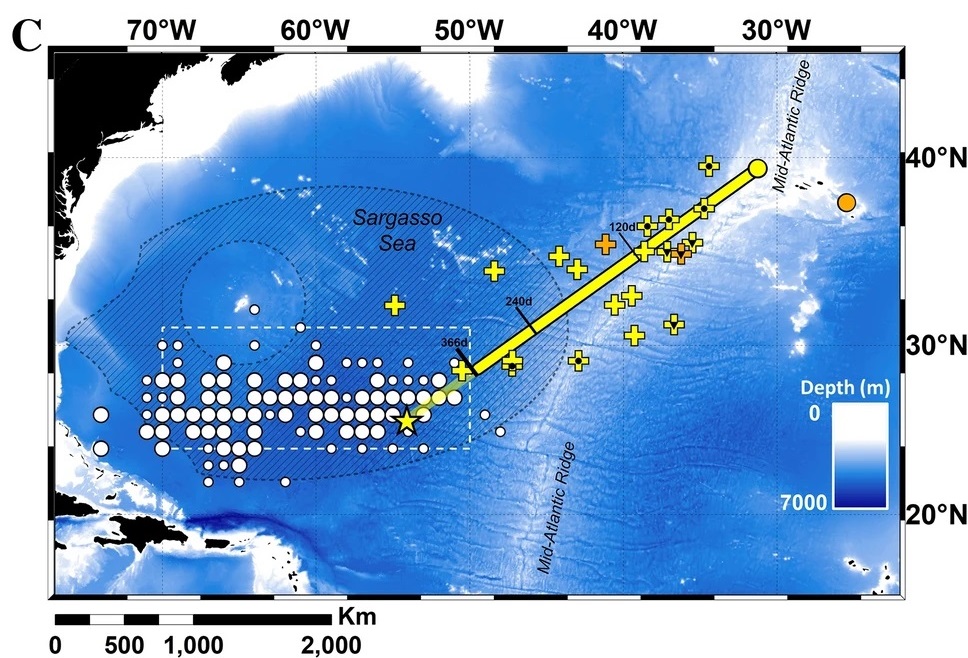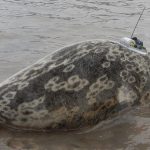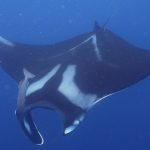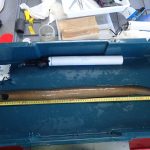← Back
Tracking eels to the Sargasso Sea
![European eel fitted with a pop-up satellite tag (Credit Alan Walker, from [Wright et al., 2022]) European eel fitted with a pop-up satellite tag](https://www.argos-system.org/wp-content/uploads/2023/06/eels.jpg)
European eels are a critically endangered species. They have a complex life-cycle with their spawning area thought to be in the Sargasso Sea. A study managed to track them to their breeding place for the first time using pop-up tags.
Main Photo: European eel fitted with a pop-up satellite tag (Credit Alan Walker, from [Wright et al., 2022])
We’ve reported on this web site studies tracking European eels (Anguilla anguilla) from the Mediterranean Sea shores to the Atlantic (or not, as some got eaten along the way – see Eels’ travel in the Mediterranean tracked thanks to Argos & goniometer, Silver Eel migration behaviour in the Mediterranean Sea, Silver Eel migration behaviour in the Mediterranean Sea, How many Mediterranean migrating eels are eaten on their way to the Atlantic?). However, just over a century ago the Sargasso Sea was proposed to be the only spawning place of the European eels since it is where the smallest larvae are found. However, no satellite telemetry tracking has been done which showed adults reaching that area from the European coasts, even when some of the tracking encompassed over 6 months, and up to 5000 km from release sites.
Eels’ tracking from the Azores to the Sargasso Sea
The previous studies hinted of a convergence of the eels’ routes when reaching the Azores. Some European eels are found on those islands, too, and thus could be fitted with Argos pop-up tags there. The assumption is that these tagged eels will have the same behaviour as eels migrating from the continent after leaving the Azores area.
Twenty-six female silver eels were tagged with pop-up satellite transmitters and released from Azores islands’ shore in November and December 2018 and 2019. Twenty-one tags detached after more than 40 days (up to one year, about six months on average) and recorded substantive data along the way. The locations at tag release along the way confirmed that they were going towards the Sargasso Sea. Six were within the Sargasso Sea boundaries itself, with one within the area thought to be the eels’ breeding place (located between 31 °N, 50 °W and 24 °N, 70 °W).
More info about animal tracking with Argos

Pop-up data from European eels tagged at two Azores locations (circles) in November of 2018 (orange) or 2019 (yellow). Crosses show the detached tags’ locations. The yellow star shows the extrapolated position along the average bearing for a migratory period ending at the second peak spawning event after release (i.e. 14th February, 466 day after release). White circles show where the smallest larval eels have been recorded in surveys conducted over the last century (diameters encoding the larva sizes). The white dotted box is the extent of the spawning area in recent times. (GEBCO bathymetry, figure drawn in ESRI ArcMap 10.5) (from [Wright et al., 2022]).
Confirmation of the Sargasso Sea as spawning grounds, still questions to answer
These results are the first direct evidence of European eels reaching the Sargasso Sea. However, none of the eels tagged in this study migrated fast enough to arrive in the spawning area before the end of the recognised spawning period (from December to May, with a peak in February-March). The hypothesis is that they might take a slower migration towards these breeding grounds, arriving at different times, and that they stay there and possibly end their maturation for the spawning period of the year after.
These results are encouraging as they complete the migration route which has been started by the previous studies. It raises or leaves unanswered questions, though, such as how they orient themselves, the exact locations of the spawning grounds, etc. This information should help in identifying measures for protection and a sustainable recovery of this critically endangered species.
Reference
Wright, R.M., Piper, A.T., Aarestrup, K. et al. First direct evidence of adult European eels migrating to their breeding place in the Sargasso Sea. Sci Rep 12, 15362 (2022). https://doi.org/10.1038/s41598-022-19248-8



